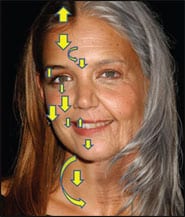
Early degradation of HA fillers limits the duration of the cosmetic effects. Longevity is affected not only by the properties of the HA fillers, but also by forces applied to them—including contraction of neighboring muscles.
Listen as Steven Fagien, MD, FACS, a plastic surgeon in Boca Raton, Fla, discusses the article.
To reduce these forces, plastic surgeons sometimes use HA fillers in a combination procedure with BoNT-A. This causes temporary paralysis of the muscles in the treated area, lasting a few months. Several studies have suggested that this chemodenervation procedure improves the clinical results of HA filler injection.
For a more objective demonstration, researchers led by Dr ?smail Küçüker and colleagues of the Ondokuz May?s University Faculty of Medicine in Samsun, Turkey, designed a study in rabbits in which a small amount of HA filler was injected under the skin in front of each ear. This area was chosen because it corresponds to the forehead region in humans—a common area for dermal filler treatment.
On one side, HA filler alone was used. On the other side, HA filler was combined with BoNT-A to paralyze the muscle in that area. After 3 months, MRI scans were performed to compare the amount of filler remaining on the two sides.
The follow-up scans confirmed that BoNT-A slowed degradation of the injected filler. At 3 months, chemodenervation with BoNT-A decreased the degradation rate of the HA fillers by 42%.
At the same time, the remaining volume of HA filler was 50% greater on the side where BoNT-A was used. The difference was visible as well as measurable, supporting the clinical experience that BoNT-A injection provides longer-lasting outcomes in patients.
“This study showed that HA filler application in combination with BoNT-A significantly decreases the degradation process and increases the remaining volume at the end of the paralyzed period,” Küçüker and colleagues conclude.





